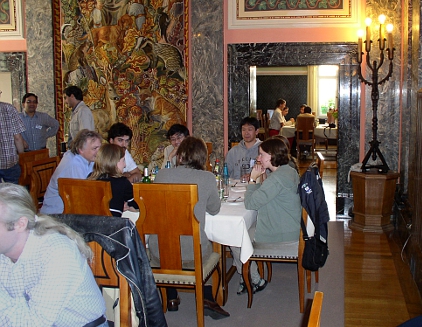| Scientific Advisery Committee SAC |
|---|
|
SAC membership is by invitation.
It is more work than the SOC work for a common conferences.
Communication is done by email, no telecons/videocons are necessary.
|
You will be asked to suggest session topics as well as review speakers for each suggested topic.
In a SAC voting, topics and speakers will be selected.
The suggestions and votes should be influenced by the specific focus of the
oncoming EPoS meeting.
|
|
Once the registration has been closed, you vote on oral contributions and participation.
To consider excellence of science, but also to have a balance between theory and observations, as well as
to some extent between young and old, gender, nationality, schools of thought etc. is the difficult part of this decision.
|
|
Usually, SAC members do not give reviews.
|
|
The organisers hope that you plan to attend the meeting when you accept the SAC membership.
|
|
| Prime Talk |
|---|
|
The topic of the prime talk is the focus of the meeting.
|
|
Prime talks last 50 minutes followed by 30 minutes discussion, and
have their own session.
|
|
A good overview over the entire field, an open and critical attitude,
and the ability to give a fresh and stimulating presentation are helpful
for prime talks.
|
|
The prime talk can contain parts where not the science but our approach in
performing it is discussed.
|
|
 This page summarizes guiding information about how participants can adjust to the unusual
EPoS conference format,
be it to, e.g., give a talk or review, to organize a focus group, or to chair a discussion.
This page summarizes guiding information about how participants can adjust to the unusual
EPoS conference format,
be it to, e.g., give a talk or review, to organize a focus group, or to chair a discussion.
 This page summarizes guiding information about how participants can adjust to the unusual
EPoS conference format,
be it to, e.g., give a talk or review, to organize a focus group, or to chair a discussion.
This page summarizes guiding information about how participants can adjust to the unusual
EPoS conference format,
be it to, e.g., give a talk or review, to organize a focus group, or to chair a discussion.